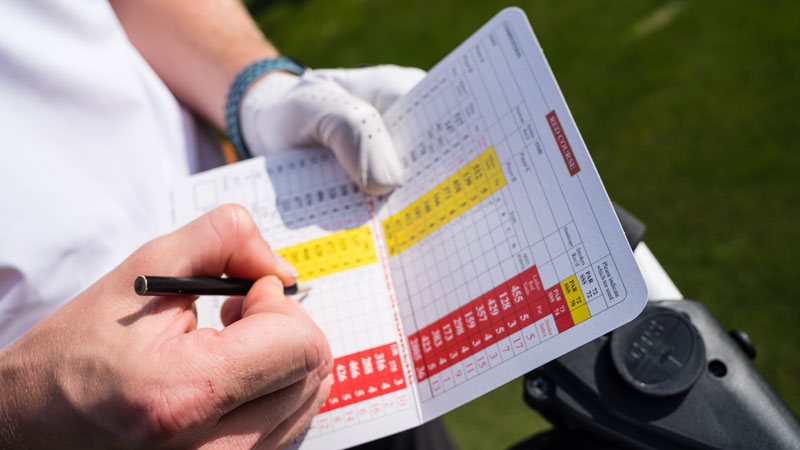What Is Score Differential?
We often hear about the term Score Differential but what does it actually mean and how does it affect our handicap index?


According to the USGA website a Score Differential ‘measures the performance of a round in relation to the relative difficulty of the course that was played, measured by the Course Rating and the Slope Rating. The result of the daily conditions calculation (PCC) is also included in the Score Differential calculation which may provide an adjustment if course and/or weather conditions significantly impacted scores on that day’.
A Score Differential is calculated using the following formula:
(113/Slope Rating) x (Adjusted Gross Score - Course Rating - PCC adjustment)
There’s quite a lot to unpack here but the first thing to understand is your score and your score differential are different. The good thing is that the Score Differential is calculated for us and it is there on our app, eg England Golf, and we can see our last 20 scores and what the Score Differential is. It’s when we look at all our scores that hopefully things become a bit clearer and our best eight scores are highlighted so we can see when a good/bad score will drop off.
To understand what each part is, put simply, Slope Rating ranges from 55-155 with the average being 113. When you play a course with a Slope Rating higher than 113 your Course Handicap will be higher than your Handicap Index and when you play a course with a Slope Rating lower than 113, your Course Handicap will be lower than your Handicap Index.
The Slope Rating will vary from whichever tees that you play from. It’s worth pointing out that the higher the slope rating doesn’t necessarily mean that the course is more difficult rather that the greater the difference is expected between the scores of a scratch and bogey golfer (see below).
The Adjusted Gross Score is a player’s score that is adjusted for when a player has a big number or doesn’t play a hole and a Net Double Bogey is awarded so you can have nothing on your card higher than that score.
Subscribe to the Golf Monthly newsletter to stay up to date with all the latest tour news, equipment news, reviews, head-to-heads and buyer’s guides from our team of experienced experts.
The Course Rating is the evaluation of the playing difficulty of a course for the scratch handicap (0). It is used in conjunction with the Bogey Rating (the difficulty of the course for a bogey player of 20-24 handicap) to determine the Slope Rating. The Course Rating system is extremely objective and considers more than 460 variables on a standard course rating, from each set of tees.
The PCC (Playing Conditions Calculation) determines whether playing conditions on the day differed from normal conditions to the extent that an adjustment is needed to compensate.
Going back to the original question a Score Differential must be an 18-hole value or its calculated equivalent.
So when we take our eight best Score Differentials (not scores) from our last 20 rounds and find an average that determines our WHS Index. Like most things, particularly when it comes to handicaps, it really is a case of trusting the system and involving yourself in it and then things become a lot clearer.

Mark has worked in golf for over 20 years having started off his journalistic life at the Press Association and BBC Sport before moving to Sky Sports where he became their golf editor on skysports.com. He then worked at National Club Golfer and Lady Golfer where he was the deputy editor and he has interviewed many of the leading names in the game, both male and female, ghosted columns for the likes of Robert Rock, Charley Hull and Dame Laura Davies, as well as playing the vast majority of our Top 100 GB&I courses. He loves links golf with a particular love of Royal Dornoch and Kingsbarns. He is now a freelance, also working for the PGA and Robert Rock. Loves tour golf, both men and women and he remains the long-standing owner of an horrific short game. He plays at Moortown with a handicap of 6.